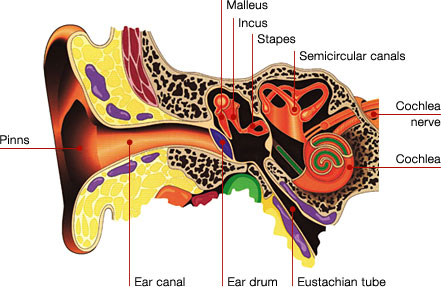Sound waves are collected by the outer ear and channeled along the ear canal to the eardrum. When sound waves reach the eardrum, the impact creates vibrations which are transferred through a series of three tiny bones.
The third of these bones is connected to a delicate, snail-shaped structure called the cochlea. The cochlea is filled with fluid and lined with thousands of microscopic hairs.
The vibrations are transmitted to the fluid in the cochlea, where the hair cells are bent by the wave-like action of fluid inside the cochlea. The bending of these hairs sets off nerve impulses that are then passed through the auditory nerve.
The auditory nerve carries the signal to the hearing centre of the brain, which translates the impulses into what we perceive as “sounds”.




